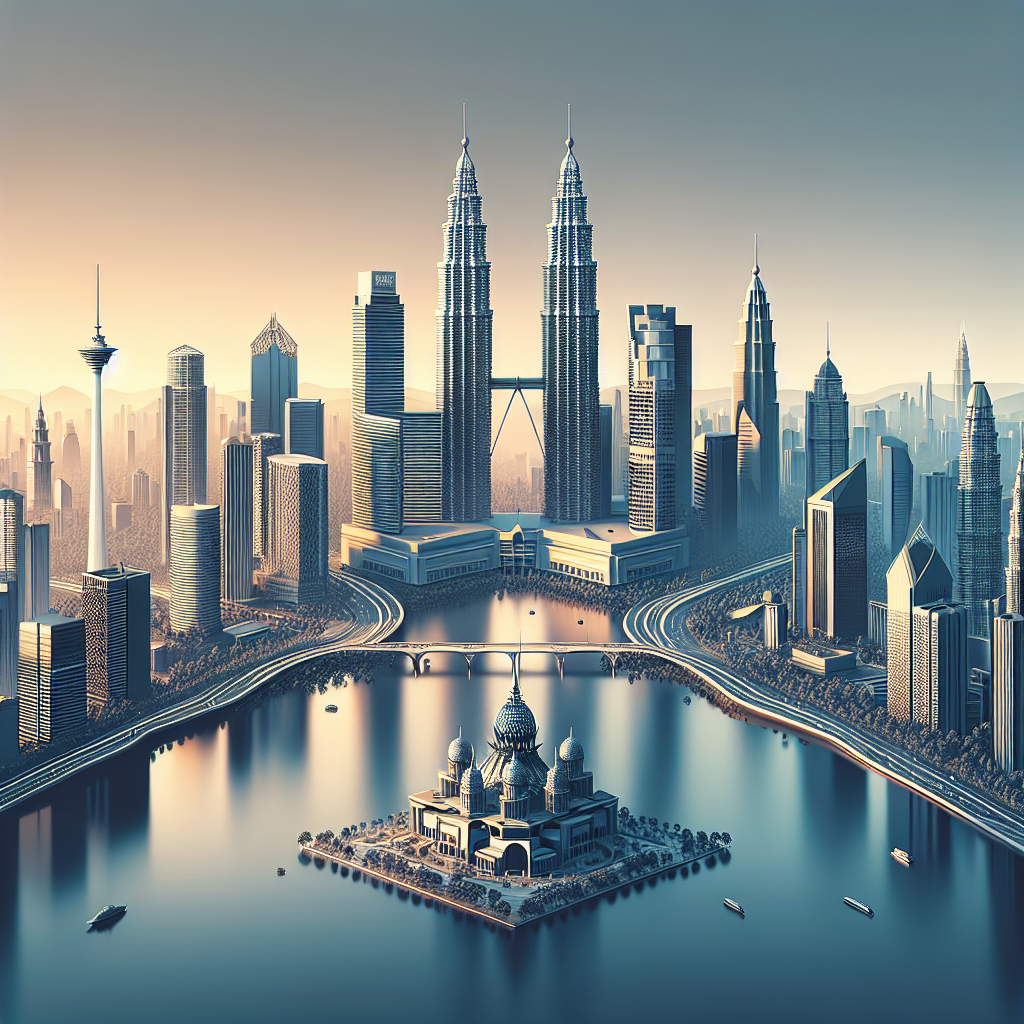Architectural Marvels: The Best of Malaysia’s Unique Structures
Malaysia, a country renowned for its vibrant culture, diverse heritage, and scenic landscapes, is also a treasure trove of architectural marvels. The nation’s skyline is adorned with structures that boast a blend of traditional and contemporary design, reflecting Malaysia’s rich history and its forward-looking aspirations. Let’s embark on a journey through some of Malaysia’s most iconic structures that captivate both locals and visitors alike.
The Petronas Twin Towers
Perhaps the most famous of all Malaysian structures, the Petronas Twin Towers in Kuala Lumpur stands as a symbol of the nation’s aspirations and growth. Completed in 1998, these 88-story towers were, for a time, the tallest buildings in the world. Designed by Argentine architect César Pelli, the towers reach a height of 452 meters and are connected by a sky bridge on the 41st and 42nd floors.
The design of the towers draws inspiration from Islamic art and architecture, with its cross-section resembling a Rub el Hizb, a Muslim symbol, reflecting Malaysia’s dominant religion. The towers house offices, a shopping mall, a concert hall, and an observation deck that offers breathtaking views of the city.
Menara Kuala Lumpur
Another iconic structure in the capital is the Menara Kuala Lumpur, or KL Tower, which is one of the tallest telecommunications towers in the world. Standing at 421 meters, the tower was completed in 1995 and serves both as a broadcasting tower and a tourist attraction.
The KL Tower’s architectural design is inspired by Islamic motifs, with the overall structure resembling an Arabic script. The tower’s viewing deck is higher than the Petronas Towers’ sky bridge, providing a panoramic view of the Kuala Lumpur skyline.
Istana Negara
The Istana Negara, or the National Palace, is the official residence of the Yang di-Pertuan Agong, the monarch of Malaysia. The new palace, which was completed in 2011, sits on a 97.65-hectare site in Jalan Tuanku Abdul Halim, Kuala Lumpur.
The palace’s design is an exquisite blend of traditional Malay and Islamic architecture, featuring golden domes and intricate carvings. The palace complex includes the main palace, two smaller palaces, and various other buildings, all set within beautifully landscaped gardens.
Sultan Abdul Samad Building
Located in the heart of Kuala Lumpur, the Sultan Abdul Samad Building is one of the city’s most distinguished landmarks. Completed in 1897, it initially served as the secretariat for the colonial British administration and now houses the Ministry of Communications and Multimedia and the Ministry of Tourism and Culture.
Designed by British architect A.C. Norman, the building features a stunning façade of red bricks, with arches, domes, and a 41-meter high clock tower, reflecting Moorish, Indo-Islamic, and Gothic architectural styles.
Kek Lok Si Temple
Moving away from the hustle and bustle of Kuala Lumpur, Penang is home to Kek Lok Si, the largest Buddhist temple in Malaysia. Situated in Air Itam, the temple was completed in 1930 and is a blend of Chinese, Thai, and Burmese architectural influences.
The temple complex is a majestic sight, featuring the seven-story Pagoda of Rama VI, which houses a bronze statue of Buddha, and the towering statue of the Goddess of Mercy, Kuan Yin. The temple is a testament to Malaysia’s religious diversity and cultural heritage.
Thean Hou Temple
Another testament to Malaysia’s cultural diversity is the Thean Hou Temple in Kuala Lumpur. This six-tiered temple, dedicated to the Chinese sea goddess Mazu, is one of the largest and oldest temples in Southeast Asia.
Completed in 1987, the temple features a blend of contemporary and traditional architectural styles, with elements of Buddhism, Taoism, and Confucianism. The temple complex includes prayer halls, a Chinese medicinal herbs garden, and a tortoise pond, making it a serene escape within the city.
Penang Bridge
Connecting the island of Penang to mainland Malaysia, the Penang Bridge is an engineering marvel. Spanning 13.5 kilometers, it was the longest bridge in Southeast Asia when it was completed in 1985.
The bridge’s design incorporates modern engineering techniques and aesthetic elements, making it not just a vital transportation link but also a visual icon. The bridge has become a symbol of Penang’s development and prosperity.
FAQs
Q: What is the tallest building in Malaysia?
A: The tallest building in Malaysia is the Merdeka 118, which surpasses the height of the Petronas Twin Towers.
Q: Can visitors access the Petronas Twin Towers?
A: Yes, visitors can access the sky bridge and the observation deck of the Petronas Twin Towers, though tickets are required and it’s advisable to book in advance.
Q: What architectural style is the Sultan Abdul Samad Building known for?
A: The Sultan Abdul Samad Building is known for its Moorish, Indo-Islamic, and Gothic architectural styles.
Q: Where is the Kek Lok Si Temple located?
A: The Kek Lok Si Temple is located in Air Itam on the island of Penang in Malaysia.
Q: Is the Thean Hou Temple accessible to tourists?
A: Yes, the Thean Hou Temple is open to tourists and is a popular site for both worship and tourism.
Q: What is the purpose of the Menara Kuala Lumpur?
A: The Menara Kuala Lumpur serves as a telecommunications tower and a tourist attraction, offering panoramic views of Kuala Lumpur.
Q: How is the Istana Negara significant?
A: The Istana Negara is the official residence of the Yang di-Pertuan Agong, the monarch of Malaysia, and is an important symbol of Malaysia’s monarchy.
Q: What makes the Penang Bridge special?
A: The Penang Bridge is special for its length, connecting Penang Island to the mainland, and for being an iconic symbol of the region’s development.
In conclusion, Malaysia’s architectural landscape is as diverse and vibrant as its cultural heritage. From towering skyscrapers and modern bridges to historic buildings and serene temples, these structures not only serve functional purposes but also tell the story of Malaysia’s rich history and its progressive vision.
